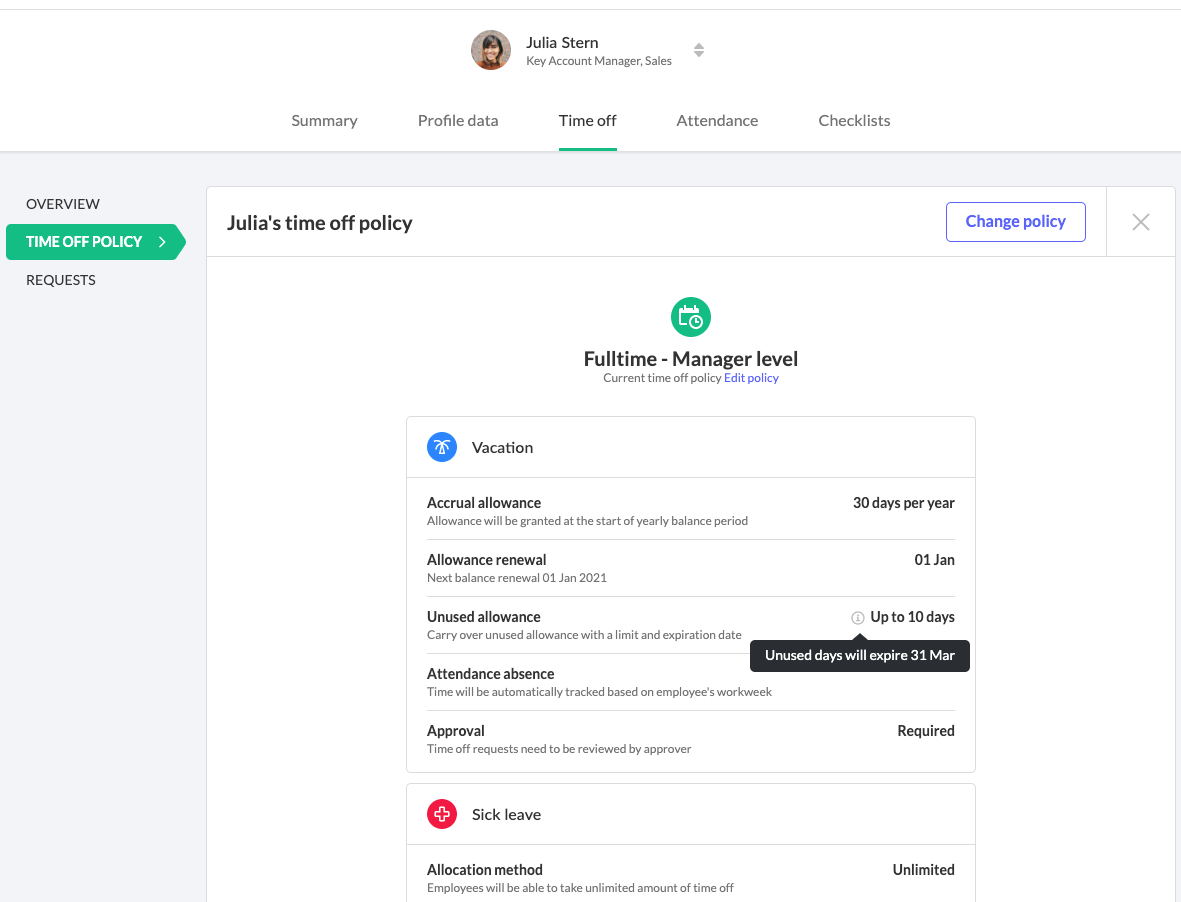- Leave Management
Guide to holiday accrual rules and COVID-19 impact

Accounting and managing holiday accrual form a key part of HR's duties. Not only does the law in the United Kingdom require it, but it also facilitates a healthy employer-employee relationship within your business.
Unfortunately, keeping track of all those numbers for your various employees can be an overwhelming task for a business. Each employee plays a different role, works different hours, and is therefore subject to different rules.
So how do you take care of something so complex, but essential? To simplify the task, let's first take a look at what it is.
1. Understanding holiday accrual regulations in the UK
In the UK, almost every full-time worker is entitled to 5.6 weeks (28 days) of paid holiday during a single year.
Other terms for this kind of leave include statutory leave entitlement and annual leave. This includes workers who work 5 days a week, whether as agency workers, zero-hour contract workers, or workers who work irregular hours.
As an employer, you can choose whether or not you want to include bank or public holidays into the 5.6 weeks of paid leave.
Additionally, you are only allowed to round up on payments, not round down.

1.1 Holiday accrual system for part-time employees
In the UK, any worker who works less than 5 days a week is considered as working part-time. Now, these workers will also be entitled to 5.6 weeks of paid leave, however, here each week will be calculated on the basis of how many days they work per week.
For example, if X works 3 days a week, they will be entitled to 3/5th of 28 days, which means 16.8 days of paid leave a year.
Employees who work irregular hours are entitled to paid leave, depending on the number of hours they work during an average week.
1.2 Holiday accrual for newly hired and departing employees
Now that you're familiar with the legal system in place for part-time and full-time workers, you might consider the issues raised by sudden changes to an employee's schedule.
What happens when an employee suddenly joins or leaves at some point during the year?
In this case, the entitled paid leave will be calculated based on how much of the year the employee has been present and working. This is called "accrued holiday."
2. How does Coronavirus (COVID-19) affect annual leave?
If work is affected by the ongoing coronavirus pandemic, workers are permitted to carry over untaken leave into the next two years. However, there are limitations.
So, who does this apply to?
- Key workers, like those working in healthcare facilities or supermarkets
- Those required to cover for their co-workers, thereby losing the opportunity to benefit from their paid leave
- Those who are unable to use their leave due to necessary self-isolation or illness
If an employee is dismissed or leaves their job, the amount of holiday pay due must be added to their final invoice.

3. Is there any flexibility in determining holiday accrual?
The 28 days is simply a statutory measure to ensure a minimum as well as the maximum period of statutory leave for full-time employees. This means that even if an employee works 6 days a week, they are still only entitled to a maximum of 28 days paid leave as required, by the law.
Depending on your business policy, you can of course, also choose to increase the amount of paid leave due. You are, however, not required by law to do so. If you choose so, it is recommended to include the information in the employment contract.
Our HR system has a holiday entitlement calculator that easily does the work for you regardless of working arrangements.
To manage annual leave, you can also create as many policies as you like.
4. Managing holiday accrual with HR software
It is clear that managing holiday accrual is not simple, and that's why it helps to have HR software at hand. Here are some of the many benefits that come with using HR tools.
- It allows you to set time-off policies for different types of employees
- You can define allowances for different types of leave like sick leave, holidays, remote working or other customised leave
- You can assign each employee to their applicable policy
- Get quick and easy access to holiday accruals, and check them off your list
- View public and bank holidays in a single, convenient location
- Synchronise these holidays with your calendar
While these are great benefits, it must be noted that not every HR software or absence management software lives up to these standards.
So, how do you find one that's right for your business?

Finding the right HR software for your company
Every company has it's own unique policies and contracts that determine their requirements. That's why an HR software with immense room for customization, like kiwiHR, is a great option.
It helps you manage any kind of leave, with automatic holiday accrual calculation, accurate time off records, and holiday allowance for every kind of employee. Moreover, you can also define different types of leave to manage absence and assign them to employees.
Intrigued?
Start your free 14-day trial and learn first hand about what kiwiHR can do for you and your company!
Welcome to our mailing list! We hope you enjoy our content!


